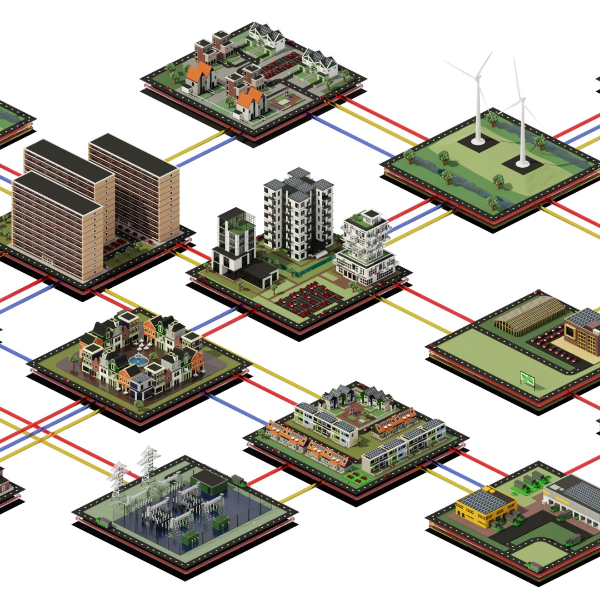Holontool.nl: interactively explore the potential of local energy systems

Holontool.nl: interactively explore the potential of local energy systems
It is generally expected that a significant contribution to the energy transition will be made by local energy systems. These could take the form of neighbourhoods, business parks or agricultural areas that exchange energy locally. But knowing the best way to approach the creation of such systems – including making the policy decisions and local-level choices they require – can be a challenge. Holontool.nl now allows government policymakers to discover for themselves how best to address this challenge, providing them with a tool that makes use of agent-based modelling to go beyond generic scenarios to cater to specific local situations.
Holontool.nl is the result of a research project investigating semi-autonomous energy systems launched in January 2022 by a large consortium comprising, among others, ZEnMo, TU/e, TNO, Antea Group, Quintel, Hanze University of Applied Sciences Groningen, Amsterdam University of Applied Sciences, and Witteveen+Bos. The project was commissioned by the Netherlands Enterprise Agency as part of Energy Innovation NL’s system integration programme. With its experts in project management, software development and energy system modelling, Witteveen+Bos’s contribution to the development of this innovative platform was significant.
At the heart of holontool.nl is a calculation engine capable of providing interactive insight into the effects of holarchic system configurations. Five case studies of such configurations are also included, featuring a business park, an industrial cluster, a residential neighbourhood, an agricultural company, and a municipality.

Simulating human behaviour
One of holontool.nl’s most innovative aspects is its use of agent-based modelling to better generate insight into how local ‘actors’ in an energy system would respond to policy measures. This affords greater local autonomy and involves simulating the human behaviour underlying certain phenomena – for example, the tendency to charge electric cars between 6:00pm and the following morning which leads to increasingly high peak loads during this time. The model also factors in considerations such as the fact that solar panels only supply power during the day and overburden the grid. With all this information, it becomes possible to explore how price incentives, such as dynamic tariffs, could result in a better distribution of peak loads.
Unlike a scenario model based on a range of assumptions, or an optimisation model that uses idealised predictions, agent-based modelling takes local parameters, behaviour and policy measures as its starting points. This means that the predicted system performance is the result of underlying dynamics and not imposed from above. It is a method of modelling, therefore, that fits in seamlessly with the thinking behind local energy systems.

Real-time data exchange
With holontool.nl, the user is able to experiment with different settings – for example, the split between solar and wind generation or the size and number of batteries. Any increase or reduction in, for example, the number of houses, residents, solar panels, charging points, electric cars or factory buildings will have an impact – on grid loads as well as the level of affordability, sustainability and self-sufficiency. This impact is instantly reflected in holontool.nl’s results. The user can then decide, based on these, whether the proposed change is desirable and/or feasible.
Holontool.nl’s calculation engine is dynamically enriched with data from the Energy Transition Model (ETM). This data is related, among other things, to expected energy prices and demand. The link to the ETM makes it possible to calculate the feasibility indicators of energy communities at not only a local level but also at regional and national levels. The exchange of data between the systems occurs instantly, with holontool.nl not only retrieving data but also enriching the ETM with its own results and the performance of local system components. This, in turn, increases the reliability of the ETM.

The intention is that policymakers, entrepreneurs and innovators are inspired by the potential of local energy communities demonstrated by holontool.nl. In order to generate fast and sufficiently detailed results, representative neighbourhoods and business parks are used which allow users to design the most appropriate local energy system in terms of capacity, cost and feasibility.
The name holontool.nl is derived from a holon: an object that is both a whole in itself and part of a larger whole. This concept is in line with the current change in our energy structure – from a centralised system based on fossil fuels and featuring a handful of suppliers from which everyone obtains energy, to a complex system with multiple renewable sources and unpredictable supply and demand.
More information?
